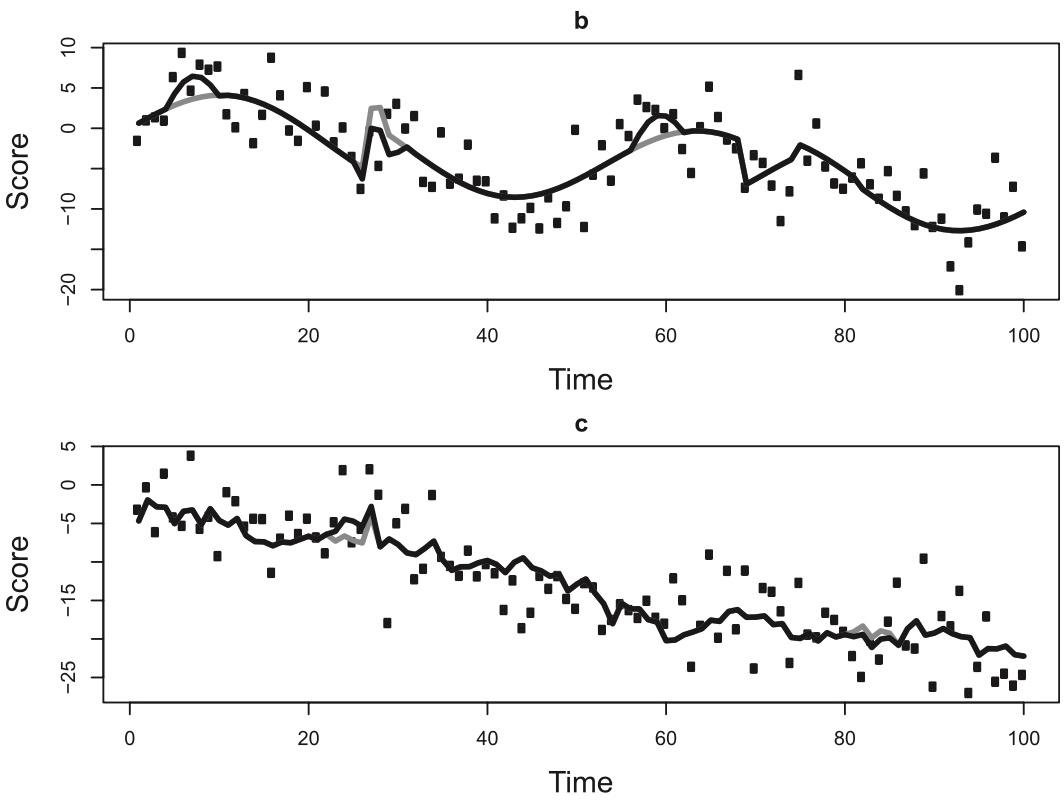Intraindividual measures, such as intraindividual standard deviation or coefficient of variation, are incomplete representations variability. Studying variability can be made more productive by examining specific time scales. Furthermore, examination of variance in observed scores may not be sufficient. A method is introduced that uses estimated derivatives to examine variability at multiple time scales.
Abstract
The study of intraindividual variability is central to the study of individuals in psychology. Previous research has related the variance observed in repeated measurements (time series) of individuals to trait-like measures that are logically related. Intraindividual measures, such as intraindividual standard deviation or the coefficient of variation, are likely to be incomplete representations of intraindividual variability. This article shows that the study of intraindividual variability can be made more productive by examining variability of interest at specific time scales, rather than considering the variability of entire time series. Furthermore, examination of variance in observed scores may not be sufficient, because these neglect the time scale dependent relationships between observations. The current article outlines a method of using estimated derivatives to examine intraindividual variability through estimates of the variance and other distributional properties at multiple time scales. In doing so, this article encourages more nuanced discussion about intraindividual variability and highlights that variability and variance are not equivalent. An example with simulated data and an example relating variability in daily measures of negative affect to neuroticism are provided.
Code and Other Content
Code here
Citation
Deboeck, P. R., Montpetit, M. A., Bergeman, C. S. & Boker, S. M. (2009). Describing Intraindividual Variability at Multiple Time Scales Using Derivative Estimates. Psychological Methods, 14 (4), 367–386.
